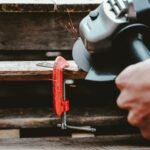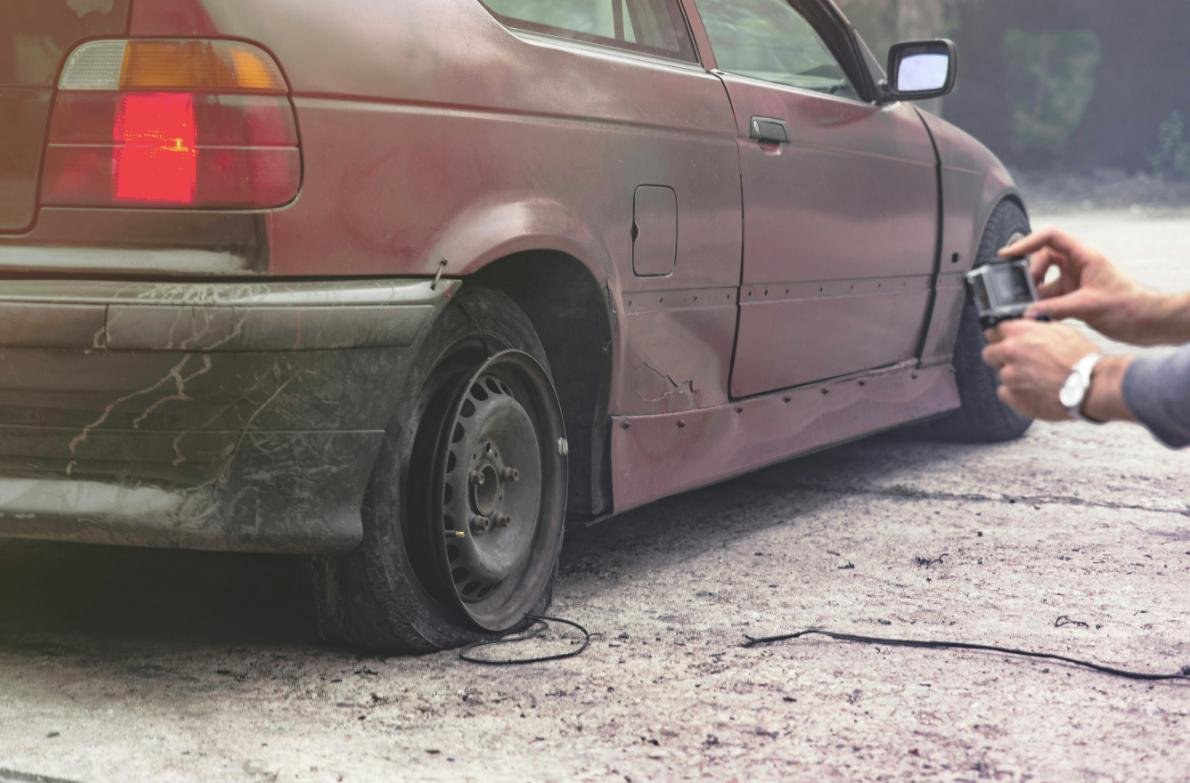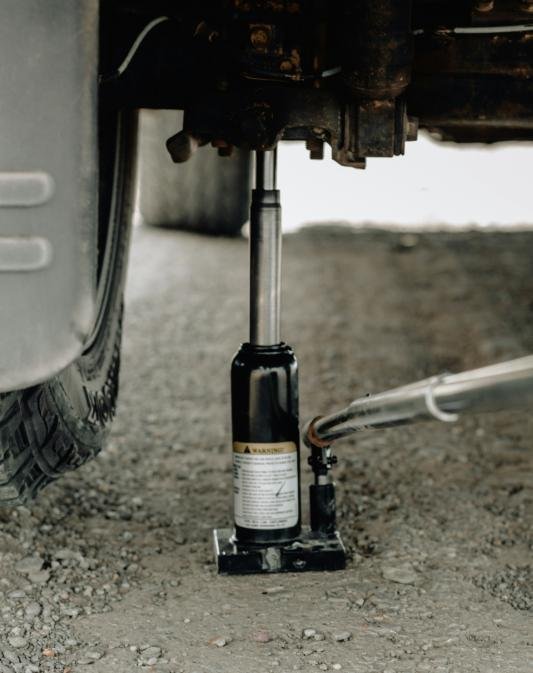Introduction to Tire Inflation
Tire inflation is a crucial aspect of vehicle maintenance that often goes overlooked by many drivers. Maintaining the proper tire pressure is essential for various reasons, including safety, fuel efficiency, and overall vehicle performance. Under-inflated or over-inflated tires can lead to a range of issues, from decreased handling and increased stopping distances to the risk of tire blowouts. Regularly checking and inflating car tires to their recommended pressure levels is vital for ensuring a safe driving experience.
Safety is the foremost concern when it comes to tire inflation. Properly inflated tires provide better traction, reducing the likelihood of skidding or losing control on wet or slippery surfaces. Moreover, correct tire pressure helps distribute the vehicle’s weight evenly, ensuring that the tires wear uniformly over time. This not only enhances safety but also prolongs the lifespan of the tires, thus saving on replacement costs.
Fuel efficiency is another significant consideration in maintaining the correct tire pressure. Studies have shown that under-inflated tires can decrease fuel efficiency, leading to increased fuel consumption and higher costs at the gas pump. When tires are inflated to their ideal pressure, rolling resistance is minimized, allowing the vehicle to operate more efficiently and economically.
There are several common signs suggesting that a tire may need inflation. These symptoms include a noticeable drop in tire tread depth, a feeling of instability or swaying while driving, or visual indicators such as a flat appearance. Other factors that can lead to a loss of tire pressure include temperature fluctuations, punctures, or slow leaks. Understanding these signs underscores the importance of timely tire maintenance and highlights the need to comprehend the inflation process, including the time it takes to properly inflate a tire.
Types of Tire Inflators
When it comes to inflating car tires, several types of tire inflators are available, each offering distinct advantages in terms of speed, portability, and ease of use. Understanding these options is crucial for motorists aiming to maintain optimal tire pressure and ensure vehicle performance.
First, manual tire pumps are a traditional and straightforward option. They often consist of a hand pump and are highly portable, making them ideal for emergencies. Their simplicity, however, comes with the trade-off of requiring significant physical effort to achieve desired pressure levels. Typically, manual pumps may take longer to inflate a tire compared to other inflating methods. Despite this, they are reliable and do not depend on an external power source, which can be a significant advantage when electricity is unavailable.
Next, electric tire inflators have gained popularity in recent years due to their convenience and efficiency. These devices can quickly inflate a tire with minimal effort, as they operate using a power source, either through household outlets or vehicle power. Many models come equipped with automatic shut-off features, allowing users to set the desired pressure and avoid over-inflation. Though generally larger and less portable than manual pumps, electric inflators may still fit in the trunk of a car, providing a great balance between speed and convenience.
Lastly, gas station compressors present another option for tire inflation. These machines are typically fast, capable of inflating a tire in just a few minutes. Their drawback lies in their lack of portability; motorists must drive to the nearest gas station. Additionally, the variable quality and maintenance of these compressors can affect their reliability and performance. Understanding these options enables drivers to choose the most suitable tire inflator for their needs, ensuring safe driving and efficient tire maintenance.
Factors Affecting Inflation Time
The duration required to inflate a car tire is not a uniform metric; rather, it is influenced by various factors that can significantly affect the overall inflation time. Firstly, the size of the tire plays a critical role in determining how long it takes to reach the desired pressure. Larger tires, commonly found on SUVs and trucks, typically require more air volume and consequently more time to inflate compared to standard passenger car tires.
Another essential factor is the initial pressure of the tire before inflation begins. A tire that is significantly under-inflated will demand a longer inflation time, as it will require a more substantial volume of air. Conversely, a tire that is close to the recommended pressure will inflate faster, due to the less demanding increase in volume needed. Regularly checking tire pressure can help mitigate the time spent inflating a tire by ensuring they are not excessively low.
The power of the inflator also affects how quickly a tire can be inflated. Electric inflators generally deliver air at a faster rate than manual pumps or lower-capacity models. Thus, investing in a high-quality inflator can dramatically reduce the time required to achieve the necessary tire pressure. Additionally, the ambient temperature at which the inflation occurs can influence tire pressure dynamics, as colder temperatures can lead to lower air pressure within the tire, thereby necessitating more time and effort for the inflation process.
Understanding these factors—tire size, initial pressure, inflator power, and ambient temperature—can help car owners gauge how long they may need to inflate their tires, ensuring a more efficient and effective tire maintenance routine.
Average Inflation Times by Inflator Type
When it comes to inflating a car tire, the type of inflator utilized can significantly influence the time it takes to achieve the desired pressure. Various inflators, ranging from manual pumps to electric compressors, each possess unique operational characteristics. Understanding the average inflation times for different inflator types can provide users with the necessary benchmarks for efficient tire maintenance.
First, let’s consider the traditional manual pump. This type of inflator often requires considerable physical effort and typically takes between 10 to 20 minutes to inflate a completely flat tire. The extended time frame is largely due to the need for continuous pumping, and while they are portable and require no electricity, their efficiency is heavily reliant on the user’s stamina and technique.
Next, the portable electric inflator or air compressor is a popular choice among drivers. These electric devices generally take about 5 to 15 minutes to inflate a flat tire. Their efficiency stems from the automatic shut-off feature, which ensures the tire reaches the correct pressure without over-inflation. Moreover, portable air compressors have become increasingly common due to their compact size and ease of use.
Another option is a professional-grade air compressor, typically found at gas stations or service centers. These machines can inflate a tire in as little as 3 to 5 minutes, offering the fastest inflation times. Such compressors are designed for frequent and high-volume use, allowing them to deliver air pressure quickly and efficiently, making them an ideal choice when time is of the essence.
In conclusion, selecting the right inflator type can significantly impact the time it takes to inflate a car tire. Whether preferring manual, portable electric, or professional-grade options, knowing the average inflation times equips drivers to make informed decisions about their tire maintenance needs.
Step-by-Step Guide to Inflate a Tire
Inflating a car tire is a straightforward task that, when done correctly, ensures optimal tire performance and safety. Follow this step-by-step guide to properly inflate your car’s tires.
Begin by gathering all necessary tools and preparation. You will need a tire inflator or air compressor, a tire pressure gauge, and safety glasses. Ensure that your vehicle is parked on a flat surface and the tires are cool. Checking the tire pressure after driving can yield inaccurate results since heat can increase air pressure.
Next, locate the recommended tire pressure for your vehicle. This information is typically found in the owner’s manual or on a label inside the driver’s side door. It is vital to note that tire pressure varies by vehicle type and can also differ between front and rear tires. Once you have the correct pressure, you are ready to proceed.
To begin inflation, remove the valve cap from the tire you wish to inflate. Attach the tire inflator hose securely to the valve stem. If you are using an air compressor, turn it on to initiate the flow of air. For manual inflators, press the lever to begin inflating. Monitor the tire pressure closely using the tire pressure gauge. If the pressure reaches the recommended level, detach the inflator and immediately replace the valve cap to prevent air loss.
Finally, it is essential to check all tires, including the spare, for appropriate inflation since under-inflation can lead to tire wear and reduced fuel efficiency. Regular tire maintenance ensures safety and prolongs the lifespan of your tires. By following these steps, you can confidently inflate your car tires, promoting better handling and overall vehicle performance.
Benefits of Regular Tire Maintenance
Regular tire maintenance plays a pivotal role in ensuring the optimal performance and safety of a vehicle. One of the most crucial aspects is the routine checking of tire pressure. Maintaining the correct tire pressure not only improves fuel efficiency but also enhances the handling and braking of the vehicle. Under-inflated or over-inflated tires can lead to uneven wear, compromising the integrity and lifespan of the tires, while also increasing the risk of blowouts on the road.
Visual inspections are another essential component of tire maintenance. Drivers should routinely check for any signs of wear or damage, such as cuts, punctures, or bulges. Early detection of potential issues can prevent more significant problems in the future. For instance, tires that exhibit uneven wear may indicate alignment issues or improper rotation. By addressing these signs promptly, drivers can ensure a smoother ride and extend the life of their tires.
Furthermore, rotating tires is vital in promoting uniform wear across all four tires. By regularly rotating tires, typically every 5,000 to 7,500 miles, drivers can maximize tire performance and lifespan. This practice helps ensure that each tire wears evenly, preventing the need for premature replacements. Additionally, aligning the wheels contributes to optimal handling, reducing tire stress and enhancing overall safety.
Ultimately, regular tire maintenance leads to significant cost savings by reducing the frequency of tire replacements and improving fuel efficiency. This proactive approach not only enhances vehicle performance but also ensures the safety of passengers on the road. By prioritizing tire maintenance, drivers can enjoy a more reliable and efficient driving experience.
Tips for Quick Tire Inflation
Inflating a car tire efficiently is a task that can be essential for maintaining vehicle safety and performance. To achieve quick tire inflation, several best practices can be implemented.
First and foremost, it is advisable to check the tire pressure specifications before inflating your tire. Vehicles typically have the recommended tire pressure printed on a sticker located on the driver’s side door jamb or within the owner’s manual. Knowing the exact pressure allows you to inflate the tire accurately and expediently, preventing the need for repeated adjustments.
It is also prudent to choose the right time for tire inflation. Ideally, tires should be inflated when they are cold, as heat from driving can increase the pressure readings and lead to incorrect inflation. Early morning or late evening is often the best time to check and inflate tires, ensuring they are at the appropriate level for optimal vehicle operation.
Keeping your inflators in peak condition is another vital tip. Regularly inspect and maintain any air compressor or inflator you use. Ensure that hoses are free of damage or leaks, and check that the compressor’s power source is functional. A well-maintained inflator will not only save time but also ensure accurate pressure readings.
Lastly, consider investing in a portable air compressor. These compact devices provide convenience and allow for quick tire inflation regardless of location. When using a portable inflator, take a moment to familiarize yourself with its operation, which will streamline the process further. By following these strategies, you can ensure your tires are inflated swiftly and correctly, enhancing both safety and driving experience.
Common Mistakes to Avoid When Inflating Tires
Inflating car tires may seem like a straightforward task, yet several common errors can lead to unnecessary complications and potential hazards. One critical mistake is over-inflating tires, which can cause decreased traction and uneven tire wear. Tires are designed to operate within a specific pressure range, usually indicated on the driver’s side door jamb or in the vehicle’s owner manual. Exceeding this recommended pressure can lead to tire blowouts or compromised handling performance, particularly in adverse weather conditions.
Another frequent oversight is neglecting to check the tire pressure after inflation. It is essential to wait a few minutes after inflating the tire and then re-check the pressure with a reliable gauge. Often, air can escape during the inflation process or the tire may need to settle to provide an accurate reading. Failing to do this step can result in either over-inflation or under-inflation, both of which can lead to significant safety issues on the road.
Using the wrong type of inflator is also a notable pitfall. Not all inflators are created equal; some may deliver inconsistent pressure, while others may be unsuitable for specific tire types, such as those with high-performance requirements. Always ensure that the inflator is compatible with your vehicle’s tire specifications and provides a precise pressure reading. In addition, regularly inspecting and maintaining your inflator can help in achieving optimal results.
Finally, it’s crucial to inflate tires when they are cool, as heat generated from driving can temporarily increase tire pressure. This ensures a more accurate pressure reading, preventing both over-inflation and under-inflation. By being aware of these common mistakes, vehicle owners can contribute significantly to the overall safety, performance, and longevity of their tires.
Conclusion and Key Takeaways
Understanding the duration required to inflate a car tire is a vital aspect of vehicle maintenance that should not be overlooked. As discussed, the time it takes to properly inflate a tire can vary based on several factors, including the type of compressor used, the tire’s current pressure, and the overall size of the tire. For instance, using a high-efficiency air pump may significantly reduce inflation time compared to a manual pump. Generally, the inflation process can take anywhere from a few minutes to around ten minutes, ensuring that motorists are never caught unprepared during emergencies.
Moreover, recognizing the importance of regular tire maintenance is crucial for vehicle safety and performance. Regularly checking tire pressure can help prevent potential hazards such as blowouts or compromised handling. Keeping tires inflated to the manufacturer-recommended pressure not only enhances fuel efficiency but also prolongs tire life. Ensuring that tires are adequately inflated is not merely an act of convenience; it is a fundamental practice for safe driving. Using a tire pressure gauge to routinely assess the inflation levels can aid individuals in identifying discrepancies early on, leading to prompt corrective measures.
In light of these considerations, it is clear that prioritizing tire care and understanding the time investment involved in inflating a tire is significant. Drivers are encouraged to integrate tire checks into their regular vehicle maintenance schedule. By fostering an informed approach regarding tire inflation and upkeep, motorists equip themselves with the knowledge necessary to enhance their driving experience and safety on the road. Ultimately, being proactive about tire maintenance minimizes risks while contributing to a more efficient driving environment.








